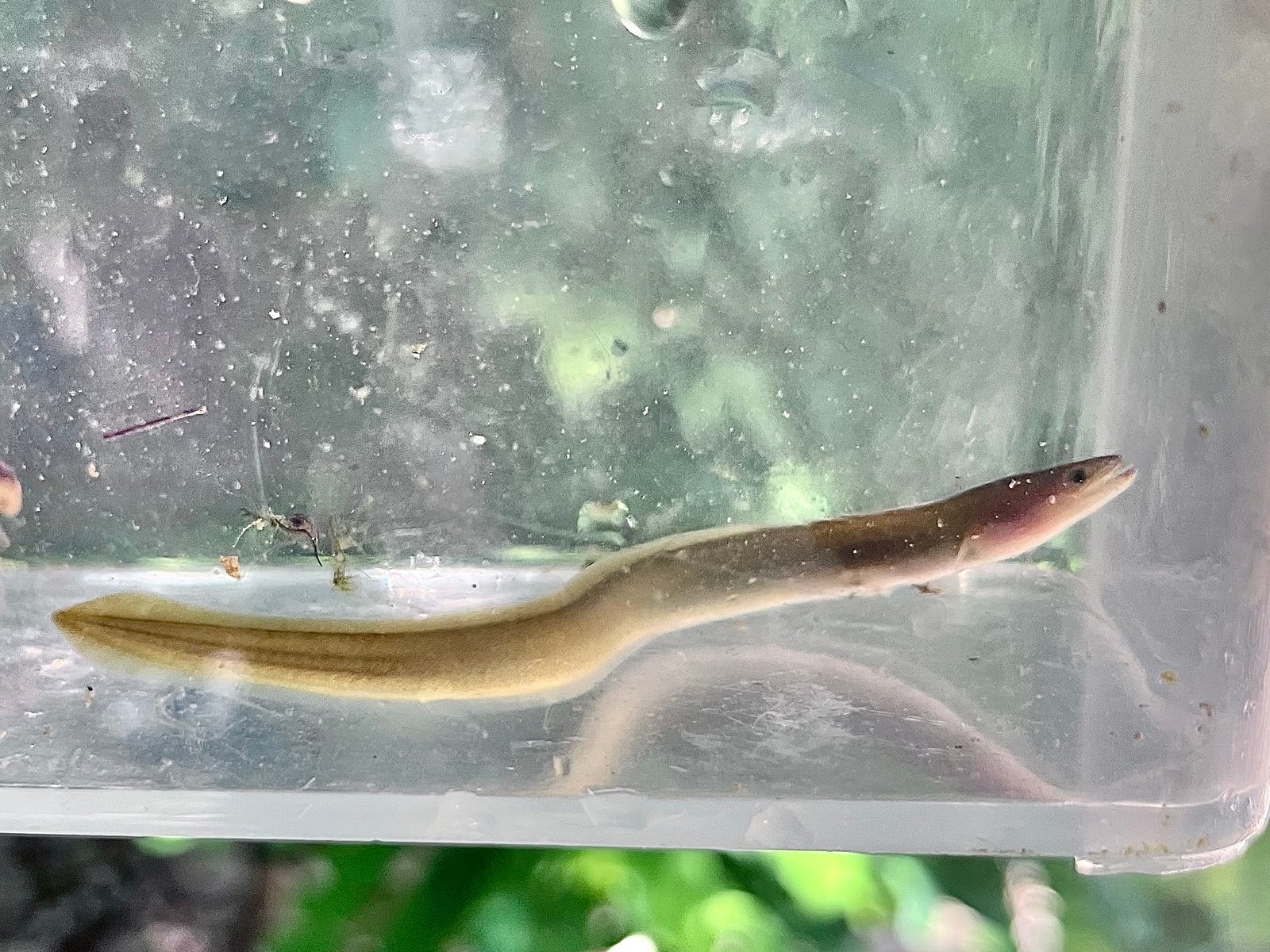There’s a quiet revolution happening beneath the ripples of the River Thames. Once declared “biologically dead” in the 1950s, today the Thames is bursting back to life, teeming with creatures that once seemed lost forever. Among the most surprising beneficiaries are the European eels—slippery, secretive, and now, astonishingly spirited. As the river recovers, these eels are not just returning; they’re thriving, wriggling through the currents with newfound energy. The transformation of this iconic waterway is more than just a feel-good story; it’s a fascinating tale of resilience, science, and the sometimes unexpected consequences of environmental success. If you’ve ever wondered what happens when nature is given a second chance, the wild resurgence of the Thames’ eel population offers some truly jaw-dropping answers.
A River Once Written Off
Just seventy years ago, the River Thames was considered a lost cause. Decades of unchecked pollution had killed nearly all aquatic life. Sewage, chemicals, and industrial waste had turned the water murky and toxic, with oxygen levels so low that fish and invertebrates simply couldn’t survive. The stench alone was notorious—Londoners would wrinkle their noses as they crossed the city’s iconic bridges. For years, scientists and residents alike mourned the loss, assuming the river would never recover. The Thames became a symbol of environmental neglect, a cautionary tale for other urban waterways. But beneath the despair, hope persisted, quietly fueling efforts to revive the river’s fortunes.
The Clean-Up: A Modern Miracle
The resurrection of the Thames didn’t happen overnight. Beginning in the late 20th century, a massive clean-up campaign was launched. Billions were spent upgrading sewage treatment plants, introducing new regulations, and monitoring water quality. Volunteers and conservationists worked tirelessly to remove litter and restore natural habitats along the riverbanks. The transformation was gradual but astonishing. Over time, the water turned clearer, oxygen levels rose, and plants began to flourish along the banks. The return of aquatic insects signaled that the ecosystem was healing from the ground up. It was like watching a patient come back from the brink—step by step, the Thames was revived.
The European Eel: A Mysterious Comeback

Few creatures are as enigmatic as the European eel. Born in the distant Sargasso Sea, these eels journey thousands of miles across the Atlantic to reach European rivers, including the Thames. For decades, pollution and barriers blocked their passage, decimating their numbers and leaving scientists worried for their future. But as the Thames grew cleaner, an astonishing thing happened—young eels, known as elvers, began to return, swimming up the river in growing numbers. By 2024, researchers noticed a clear trend: the eels were not only surviving, they were thriving. Their comeback became a symbol of the river’s resilience and the unexpected rewards of environmental stewardship.
Rowdy Eels: What Does It Mean?
With their numbers rising, eels in the Thames are displaying more vigorous, “rowdy” behaviors. Scientists have observed eels wriggling energetically through reeds, darting around in shoals, and even leaping out of the water in displays rarely seen in previous decades. These behaviors are signs of a healthy, unstressed population—eels that once hunkered down in polluted mud are now exploring, feeding, and competing for territory. Some have likened the eel resurgence to a street party after a long lockdown: when conditions improve, the energy is palpable. For curious onlookers, seeing an eel jump from the water is not just a spectacle—it’s a testament to the river’s changing fortunes.
Why Eels Matter to the Thames
European eels are more than just odd-looking fish; they’re a crucial part of the Thames ecosystem. They act as both predator and prey, feeding on insects and small fish while providing food for herons, otters, and other wildlife. Their burrowing behavior helps keep the riverbed healthy, turning over sediment and allowing plants to grow. Eels are also indicators of water quality—if they’re present and thriving, it means the river is in good shape. Their return has boosted biodiversity, attracting more birds and mammals to the riverbanks. The eels’ story reminds us that every species has a role to play in the web of life.
Scientific Monitoring: Keeping a Close Eye
The resurgence of eels in the Thames hasn’t gone unnoticed by scientists. Every year, teams of researchers and conservationists conduct eel surveys, using special nets and traps to count elvers during their upstream migration. They carefully record water temperatures, oxygen levels, and other data to track the health of the population. Advances in technology have made it possible to tag and monitor individual eels, revealing new insights into their behavior and movements. These studies are essential for understanding how environmental changes—both good and bad—affect the river’s wildlife. The dedication of these scientists ensures that the eel’s comeback isn’t just a fluke, but a lasting success.
Urban Wildlife: Nature’s Unexpected Return

The return of eels is just one part of a larger urban wildlife renaissance along the Thames. Kingfishers, otters, seals, and even seahorses have all made astonishing comebacks in recent years. The riverbanks, once littered with debris, now thrum with the buzz of insects and the songs of birds. For city dwellers, these changes are both heartwarming and surprising. It’s not unusual to spot a heron fishing in the shadow of a skyscraper, or to see children pointing excitedly at a wriggling eel. The Thames has become a living classroom—a place where Londoners and visitors alike can witness nature’s resilience firsthand.
Challenges and Uncertainties Ahead

Despite the good news, challenges remain for the Thames and its eels. Overfishing, climate change, and the spread of parasites continue to threaten eel populations across Europe. Barriers like dams and weirs can still block their migration, making it hard for young eels to reach safe habitats. Pollution hasn’t disappeared entirely, and new chemicals—like microplastics and pharmaceuticals—pose fresh risks. Scientists warn that the eel’s recovery is fragile, and that continued vigilance is essential. The future of the Thames depends not just on past victories, but on ongoing commitment and innovation.
The Power of Community Action
Behind the Thames’ transformation lies the power of community action. Local residents, schools, and environmental groups have all played vital roles in cleaning up the river and protecting its wildlife. Regular river clean-ups, educational programs, and citizen science projects have brought people together with a shared purpose. These efforts have fostered a sense of pride and ownership—Londoners now see the Thames not just as a boundary, but as a living artery at the heart of their city. The eel’s story is a reminder that positive change often begins at the grassroots, one small action at a time.
Lessons for Rivers Everywhere
The revival of the Thames offers valuable lessons for rivers around the world. It shows that even the most damaged ecosystems can recover with sustained effort and collaboration. Restoring water quality, removing barriers, and protecting habitats can deliver astonishing results—not just for eels, but for entire communities of plants and animals. The Thames experience has inspired similar projects in other cities, from New York’s Hudson River to the Seine in Paris. It’s a hopeful message: rivers are resilient, and it’s never too late to help them heal.
Looking Beneath the Surface

Beneath the busy boats and bustling walkways of modern London, the Thames now pulses with life. The sight of eels twisting through the water is more than just a quirky footnote—it’s proof that nature can rebound in the most unexpected ways. For those who pause to look deeper, the river offers a window into the extraordinary power of renewal. Will we continue to protect and cherish these wild, rowdy eels? The answer could shape the future of the Thames for generations to come.



